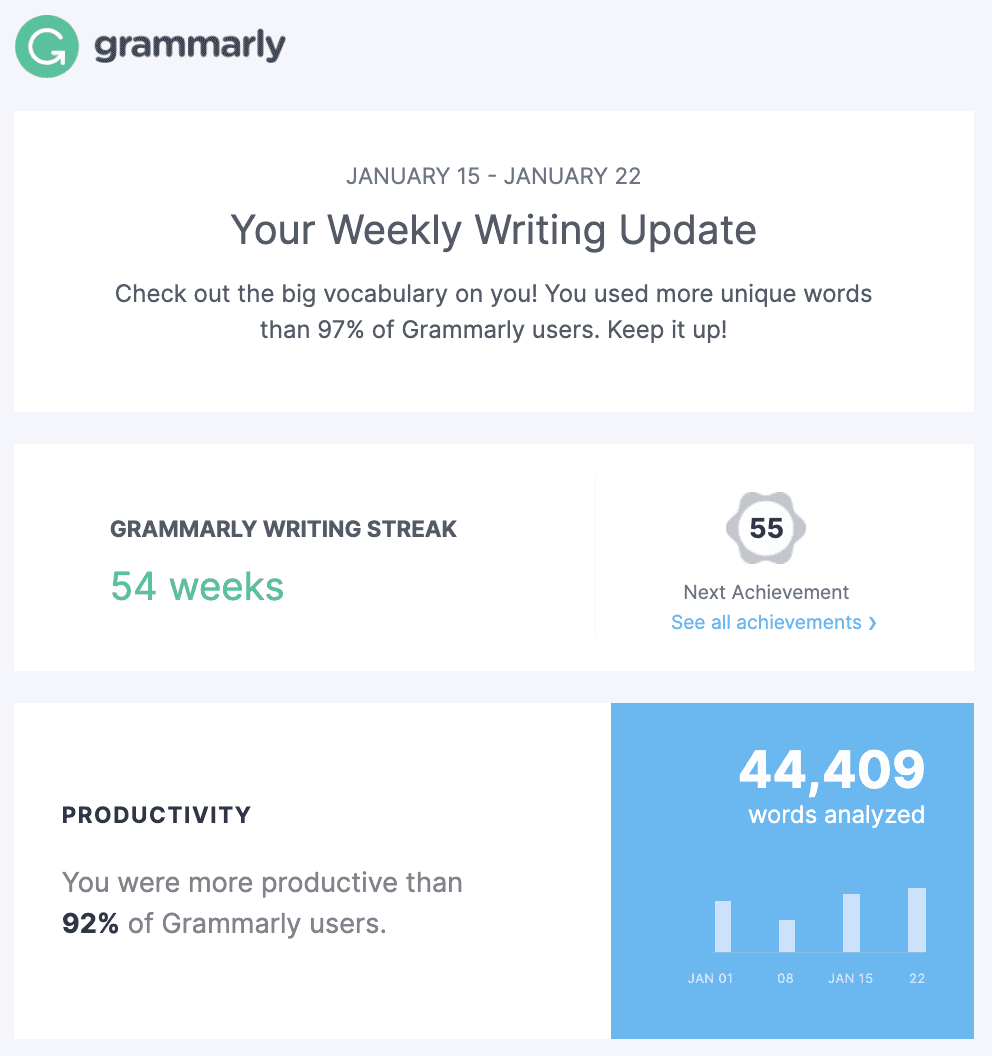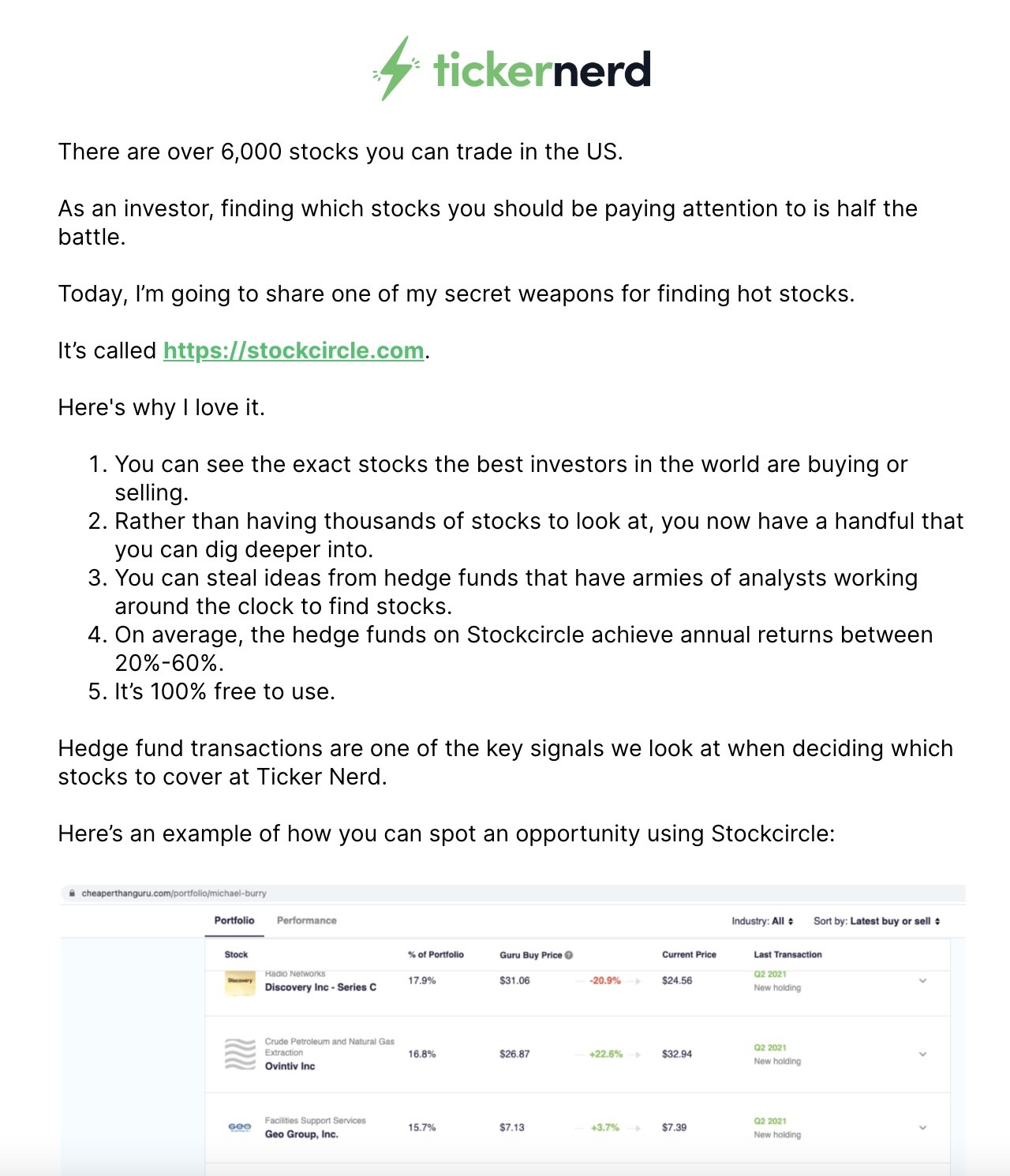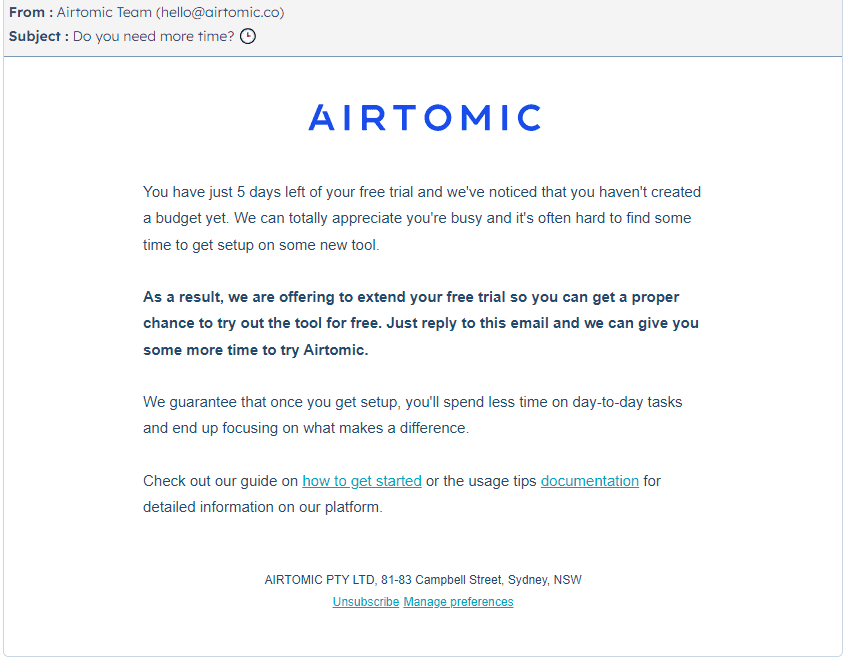Omnichannel marketing automation is often misconstrued as a 'set-it-and-forget-it' activity. In fact, the opposite is true. When you take the time to analyze and optimize every automated campaign, from essential communications to strategic journeys, you can improve on almost every business metric.
In this comprehensive guide, we’ll revisit the basics, guide you through set and common pitfalls in implementation, share real-world examples of automated campaigns that drive results, and more.
What is marketing automation?
Right time, right platform, right message. It’s every marketer’s mantra and every customer’s expectation, but delivering on that promise is far easier said than done.
Omnichannel marketing automation is what makes it possible, allowing businesses to automate communications across channels like email, SMS, and on-site pop-ups or push notifications. Without this technology, marketers would need to manually send messages to customers and leads at every stage of the customer journey — an impossible task, even on a small scale.
Successful implementation of automated marketing campaigns requires customer and behavioral data. With this data, you can segment lists and set up rules around which behaviors trigger sends and when a contact should enter or leave a campaign or segment.
What are the key benefits of marketing automation?
Marketing automation can be implemented at any scale. It can be as simple as automating regular customer updates like bank statements or a series of emails and SMS reminders to remind patients about doctor’s appointments. In these use cases, the benefit is clear — businesses of any size can ensure every customer is receiving necessary updates and information.
Go beyond the basics, and the benefits are deeper, richer, and have the potential to supercharge your business’s growth:
Deliver a hyper-personalized customer experience at scale
Personalization is table stakes at this point. A recent McKinsey report showed that 71% of consumers expect companies to deliver personalized interactions, and 76% get frustrated when this doesn’t happen. With sophisticated, omnichannel marketing automation, you can create hyper-personalized experiences that feel one-to-one at any scale.Respond to, route, and nurture more leads
Leaving even 24 hours between a lead capture form submission and outreach can be the difference between keeping that lead and losing them to a competitor. By setting up automated lead nurture journeys, you can reach your lead’s inbox first, and with relevant and personalized information. From there, leads can be quickly routed to a salesperson or to an automated nurture journey depending on how they fit your ICP and their preferences.Generate more customer data
One of the great things about modern marketing automation software is that it creates a loop whereby communications can become more and more personalized and powerful. Let’s take the lead nurture example. Once your lead is in their automated journey, you will quickly gather more data on which emails they opened, SMS they clicked on, and actions they took on-site. Every data point contributes to a richer, more personalized customer experience.Increase customer retention
In our six-part customer retention series, Growth Marketer Dan Siepen speaks at length about the enormous upshot focusing on customer retention can provide. He says, “it’s 5-25x more expensive to acquire new customers than it is to retain them. I know this from being a performance marketer myself and the ever-changing landscape of paid media. You need to make the most out of every single dollar and signup you acquire.”
Using marketing automation to do things like set up automated data reports and progress emails (the Grammarly example below is a fan favorite) can go a long way to keep your business top of mind, increase usage, and drive loyalty.
Free up time for big-picture thinking
Many marketers have undergone budget and personnel cuts in the past few years, meaning there’s simply no time or resources to waste. With marketing automation, you can take the heavy lifting out of the basics to free up time for blue-sky thinking and growth initiatives.
That said, it’s important to remember that marketing automation is not a ‘set and forget’ activity. Reviewing performance and optimizing output regularly are key components to success.
Getting started with marketing automation
Understanding your audience and goals
It’s likely your business is using some marketing automation tools in your day-to-day operations already. It could be a social media scheduling tool or a one-off automated email.
When it comes to deeper utilization of omnichannel marketing automation, establish the foundations before you start building complex journeys:
1. Consolidated, clean data
Successful automated marketing requires customer data. Zero- and first-party customer data allows you to effectively segment your audience, and set up trigger points for messages and actions. If your data is siloed, setting this up will be near-impossible. If your data is unreliable, it could result in inaccurate reporting or even a negative customer experience.
As Charlotte Bohnett, Head of Marketing at Siteline, shared in our 2023 SaaS trends report, “The benefits [of personalization in automated marketing] are clear, and I think the pitfalls are, too: Data hygiene is paramount, otherwise your personalization could be a nightmare.”
2. An ideal customer profile and customer journey map
Automating lifecycle marketing, like onboarding journeys to reactivation campaigns, requires a clear understanding of what that customer journey actually looks like. Without this information, you’ll be shooting in the dark.
If you’ve taken steps to consolidate your data, you’re well on the way to getting a granular understanding of your ideal customer profile (ICP). With a more refined view of who you’re speaking to, follow this three-step approach to mapping out the customer journey: determine all touchpoints, channels, and key conversion points; collect direct feedback; and map it out.
Data can and absolutely should be utilized here, but you’ll also want to speak to customers directly and put yourself in their shoes. The more time you can spend doing this, the more personalized your automated campaigns will become.
3. KPIs tied to your business’s overarching objectives
Ask yourself — what’s the one thing we want to achieve with our marketing automation in the next three to six months? It could be an increase in your lead-to-customer conversion rate or retention rate.
This is your focus area and your opportunity to create a robust omnichannel automated marketing campaign that proves your team’s and your marketing automation tool’s value. Now get curious and do some investigative work to identify exactly which metrics you need to optimize towards to meet this goal.
In an episode of the Grow with It podcast, Martin Gontovnikas, Co-Founder and GTM Advisor at HyperGrowth Partners, shared a cautionary tale related to this; “We were doing a lot of experiments on our activation emails, trying to optimize them for open and click rates, and we increased them a lot,” he says. “But we only realized a couple of months later that what we should have been optimizing for was activation. Once we looked further into that, we found that activation was actually worse for those who got the email versus those who didn’t get it.”
“After that, we placed much more attention onto actually picking the right KPIs, because otherwise, you might spend months optimizing something which hurts your revenue.”
Choosing the right martech platforms
It’s important to shop around and identify the right platform for your business to avoid switching from tool to tool, as this can severely disrupt your workflow and cause data hygiene issues.
Before you book demos or evaluate tools, identify your martech needs by asking questions like:
What are your most prominent marketing channels?
Which integrations will you need for success?
What kind of customer data do you have now, and how do you see it evolving in the future?
What are some of the unique challenges your business/industry faces when it comes to automating marketing?
(from above) What does success look like now?
What does success look like in one year, two years, and five years?
How many seats do you need and how many contacts do you have?
How many seats and contacts do you anticipate needing in the future?
What’s your budget? What’s your stretch budget?
What other tools are you missing in your tech stack or are there any tools you wish to replace?
How much development support do you have for implementation?
Which teams and individuals will be using this tool the most and how steep is the learning curve on each of the tools you’re assessing?
Once you have a deeper understanding of exactly what you need, ask people in your industry and read reviews on sites like G2 to put together a shortlist of potential platforms. Many will offer video demos and free trials so you can experience the platform and form a list of questions before you even have a demo or meet with sales.
If your marketing automation software has a built-in customer data platform (CDP), it will be easy to use existing data in automated marketing campaigns and utilize new data points, like email opens and SMS link clicks, for further campaigns.
Setting up your marketing automation infrastructure
Once you’ve chosen a platform tool, you’ll want to get it up and running quickly to prove its value and maintain momentum. Many marketing automation tools are user-friendly and intuitive enough that a marketing team can run them independently, but initial set up may take some development or data work, especially if you have lots of other tools to integrate or legacy data to ingest.
Most platforms will have tooltips, checklists, or support documents to guide you through the setup process. Tempting as it is, try not to skip over any of these steps. Spending a little extra time getting your platform up and running will pay off in the long run.
Generally speaking, you’re going to be looking at four major steps:
Step one: Connect your customer data sources
Add your existing contacts via a CSV upload or by connecting one of your data sources, like a CRM, via an integration. Data hygiene is essential to success with marketing automation, so take the time to assess the quality of the data before you make your next move.
Step two: Integrate your tools
The aim is to get a complete picture of your customer journey so you can create omnichannel experiences. To do this, you will need to integrate any relevant tools you are using. For example, your payment platforms, customer support tools, and advertising integrations like Google Ads. In many cases, this will require no or very light dev work, but custom or lesser-known tools may require a custom API or webhook.
Step three: Set up your brand style
One of the perks of a centralized marketing automation tool is that you can more easily control for a consistent brand experience. Most platforms will have brand settings or a brand book where you can edit your brand colors, fonts, logos, footers, and more. If you have existing email or SMS templates, you can add these too.
Step four: Invite your team and set up training
With everything set up and ready to go, invite the relevant team members to your new marketing automation tool and set up a training session or share self-training assets from the tool like videos and demos.
Creating automated campaigns
If you assessed what early success looks like while setting your foundations, it’s likely you have a basic idea of what your first campaign is going to look like. Now it’s time to build your automated lifecycle marketing campaign:
Step one: Create your audience segment/s
Identify the audience you are targeting and the customer and behavioral data points you can use to build a relevant segment. This is where the value of centralized customer data will become obvious — with all your data in one place, you can build highly-specific segments that make one-to-many personalization possible.
Step two: Choose your channels
Email, SMS, and on-site pop-ups are some of the most common channels used in automated marketing campaigns. Consider the actions you want your customer to take and which platform is most likely to generate a result. In some instances, like automated onboarding flows, you may want to push a message via email and on-site.
Step three: Identify your entry point
This could be as simple as a new lead or customer entering your specific audience segment. Or it could be a lead completing a lead gen form on LinkedIn or a customer responding to an NPS survey pop-up. Use this to set conditions that trigger the lead or customer to start receiving messages.
Step four: Map messaging
Start by mapping out the messaging — in a drip campaign to nurture leads, you may want to start with useful content and, as it becomes clear your lead is interested in your product, weave more product-related messaging into your content.
Step five: Identify activities or events that trigger messages
With your messages mapped, you should have a pretty good sense of where an audience could be split to receive different, more relevant messages or where you may want to eject or redirect unengaged users. For example, in a drip campaign, the action might be email opens. If a lead does not open at least one of the first five emails, they may leave the journey completely or be sent an opt-out message. In a more complicated example, a lead who clicks on a case study related to B2B could be sent different messaging to a lead who clicks on a B2C case study.
Step six: Build your campaign, review it, and set it live
With everything mapped out, it’s time to build your campaign, ask a teammate to review it all and set it live. Set reminders to review performance and make optimizations on a regular basis.
Examples of omnichannel marketing automation
Here are a few real-world examples of marketing automation in action.
Drip email campaigns for nurturing leads
Drip email campaigns are a great way to educate leads and, when done successfully, can quickly increase lead-to-customer conversion rates to prove the value of your new tool to stakeholders.
Luciano Viterale, Co-Founder at Ticker Nerd, points to their free educational sequences as a top performer. “We often see our members open the first few emails over five times, click the links, and even respond to us. All of this is great for engagement and sets the tone.”

Ticker Nerd uses advanced software to track hundreds of signals and data points to discover stocks before they blow up, helping everyday investors find more success. Their educational nurture series allows them to explain this process and demonstrate their point of difference.
Drip campaigns are fairly simple to set up, but success requires a bit of planning and a lot of emails.
“I would map the funnel out in a tool like Miro so you know exactly how many emails go out, when, and why,” Luciano shared, continuing, “One thing I realized was that we were not sending enough emails. Our sequence was only 15 emails long and if a subscriber didn't move through the funnel we never emailed them again.”
Because a marketing automation tool allows you to set rules around when emails are sent and when an audience member leaves a particular journey, there’s only upshot in adding more emails to your campaign. The aim, Luciano said, is to consistently give value and prove yourself to subscribers in the awareness stage.
“If a subscriber keeps opening and interacting with your emails there's really no reason to stop emailing. They would unsubscribe if they didn't want to hear from you.”
This drip campaign has become so successful for Ticker Nerd, that Luciano predicts a world where “more businesses will move away from free newsletters and send optimized emails in a longer drip sequence. These are easier to improve, and test, and are much less time/resource intensive.”
Ortto templates:
Resources:
Why empathy is the key to building successful email nurture campaigns
6 data points you should be using to personalize SaaS nurture journeys
Free trial retention
In product-led growth organizations, the free trial retention or free trial to paid user journey is a campaign worth scrutinizing and sweating over.
Ollie Duff, co-founder of ad tech SaaS business Airtomic, uses multiple channels and personalization in a journey that has increased both adoption and retention rates by more than 50%.
“We use a combination of in-platform notifications and scheduled emails which personalize communications depending on a user's early-stage actions or inactions post sign-up. We actively track fundamental platform usage, updating our CRM to tailor emails for users who may not be maximizing their free trial. These emails emphasize the respective benefits of each product feature, aiming to incite a behavioral shift that enables our users to enhance their daily workflows and save time.”

As Ollie points out, the challenge with product adoption in all its forms is in altering a user’s weekly work routine. Airtomic’s approach is effective, “because it's tailored to individual users, allowing us to highlight our product's key benefits based on their unique interactions with the platform.”
Shifting behavior is a major hill to climb for any SaaS business. When this is achieved during a free trial, campaigns in the next phase of the customer journey — like onboarding — are far more likely to succeed.
Ortto templates:
Resources:
Onboarding journey for new customers
In our Retention and Revenue Series, Dan stressed the importance of prioritizing an onboarding journey for new customers, with the goal being quick value realization. He says, “the ultimate goal for onboarding is helping users reach that ‘aha’ moment as quickly as possible. When the ‘aha’ moment is achieved with new users, that ultimately helps improve the chances of retention in the long term.”
The most difficult part of setting up your onboarding journey is identifying the actions that lead to an ‘aha’ moment for your customer. To do this, you need to identify who your product-qualified leads are and the action they are taking to earn that status. For example, it is well-documented that a PQL for Slack was when an account reaches its 2,000 message limit.
Once you’ve identified that action, you can set up an onboarding process that clearly outlines all the steps a customer needs to take to get there. Your automated marketing software will be able to identify whether those steps have been completed and send reminders via email, SMS, or on-site pop-ups to guide new users to value realization.
Dan recommends adding a visual cue showing progress to all campaign messages and push notifications. “From doing numerous onboarding activation strategies and tests/experiments over the years across numerous industries/verticals, I’ve seen checklists, checkpoints, and progress bars (at least having one of them implemented) prove time and time again to be a great way to increase the activation of new users and quickly get them to that ‘aha’ moment.”
Ortto templates:
Resources:
7 data points you should be using to personalize the onboarding journey
Why mastering the onboarding experience still provides the best results
Event-triggered messages for real-time engagement
A huge part of personalizing your customer experience is responding in real-time to the actions they take. With omnichannel marketing automation, you can use events from advertising platforms, your website, email campaigns, SMS campaigns, and even in-store loyalty card scans to trigger emails or text messages.
Here are some examples of event-based triggers in automated campaigns:
Responses to net promoter score (NPS) or customer satisfaction (CSAT) surveys
Browsing a pricing page
Interactions with live chat
In-product events
Time elapsed since sign up
Meeting scheduled, attended or missed
Webinar sign up
Interaction with a pop-up
Mica Shtwei, Tech Manager at insurance broker Pattern, uses event-triggered communications to nudge users to take the next action, “We are always trying to get clients to take the next action: ‘You’ve done a quote request, have you scheduled a time to meet? You’ve met with us, can you now make an application with us? You’ve made an application, can you sign that application? Then you’re in underwriting, can you sign that policy?’”
Pattern also use event-based triggers to recover leads who miss a scheduled meeting. They target a specific type of opportunity, the number of meetings, and the funnel stage when the meeting was scheduled. Communications are triggered one minute after the meeting is missed, and the campaign includes a total of eight emails nudging the customer to reschedule.
Ortto templates:
Resources:
Enquiry to appointment booking
Marketers in sectors like finance and health often need to optimize towards appointment bookings. As a conversion event, appointments come with a unique challenge: How do you ensure offline communications, like phone calls to make or update bookings, are captured in your journey?
Jessica Roelots, Marketing Manager at My Wealth Solutions, advises, “You need to be most wary of your customer segments. Writing automated emails can fall over quickest when the customer is getting emails or text messages that don't really apply to them or are out of sync with their stage in the journey or their other interactions with your staff.”
She continues, “First, you need to ensure you're collecting the right pieces of customer data to make sure your automation is talking to the right people. Then you need to ensure your logic, triggers, or associated tools and tasks are properly connected so that the actions of the team will update the client's position in the automation correctly. If you have phone calls or text messages with your customer support team happening externally to the automation, that needs to be factored in so the client isn't receiving mixed messages.”
When you get this right, the results speak for themselves. Jessica’s enquiry to appointment booking automated marketing journey has a 70% open rate and a 9% click-through rate and is improving as the team continues to streamline the flow.
“This automation includes email and SMS, and ultimately the measure [of success] is how many clients are qualified through to the next stage of their journey.”
Ortto templates:
Resources:
Analyzing and optimizing your automation strategy
Automated marketing campaigns are a huge time saver. But they’re not a “set-and-forget” activity. On-going analysis and optimizations are essential to success. In the early stages, a regular (i.e. weekly or monthly) session to assess performance and make necessary changes, may be necessary. As time goes on this might only need to happen on a quarterly or half-yearly basis.
Key metrics in marketing automation
You can organize key metrics in marketing automation into four categories: Engagement, conversion, customer, and deliverability. Some of these categories, and the metrics that fall under them, will be more important to your business than others.
Engagement metrics include: Open rate, click-through rate (CTR), engagement rate, sessions by campaign source, bounce rate, session duration
Conversion metrics include: Lead-to-trialist conversion rate, trialist-to-customer conversion rate, customer lifetime value (CLV), customer acquisition cost (CAC), monthly recurring revenue (MRR)
Customer and user experience metrics: time to value (TTV), active users, net promoter scores, chats per day, or tickets per day
Deliverability metrics: Delivery rate, open rate trending, bounce rate, open and click rate over time, non-delivery rates
Remember that more isn’t always better, and optimizing for the wrong metric can do more harm than good.
Ortto templates:
Resources:
Analyzing conversion rates and engagement
We’ve reiterated the importance of defining success and success metrics again and again. But it’s equally important to understand your baseline — without that, you could be analyzing conversion rates and engagement metrics against an unrealistic goal post.
Ortto’s Head of Email Deliverability, Travis Hazlewood, cautions against relying too heavily on industry benchmarks when measuring the success of your email marketing — and the same can be said for other channels in your omnichannel campaigns.
He says, “If you access all the different email marketing platforms’ benchmark reports and compare the data, you’ll find they all provide different information.
I’ve seen open rate averages for the same industry differ by 20% between reporters—especially alarming when the lower advised rate was at 20% to begin with (in this case, comparing email marketing benchmarks for the real estate industry between Hubspot and Mailchimp).
That’s an alarming difference.”
Even if the many benchmarks found across the web were consistent, there’s a good chance a portion of those opens or clicks are false reports generated from security and privacy controls like Apple’s MPP.
Instead of analyzing engagement based on arbitrary benchmarks online, compete with yourself. Create dashboards and reports that help you identify a baseline and compare month-on-month or year-on-year activity.
Using data to iterate and improve your campaigns
In an episode of the Grow With It podcast, Co-founder at Nimbus, Nish Ithayakumar identified a problem that plagues marketing today, “the companies I've worked at and the companies I've helped, they all actually have more data than they realize and they all really struggle with operationalizing that data.”
When we talk about operationalizing data, Nish clarifies, we’re talking about using it for decision-making or initiatives. In marketing automation campaigns, this means iterating and improving your campaigns — or even identifying gaps that new automations can fill.
Operationalizing data requires a few key things:
Consolidated data
Data hygiene practices
Easy access to data across departments
Nish also recommends having a ‘data quarterback’—someone who has ownership and accountability, and is tasked with not just building dashboards or finding the right data, but identifying how that data will be used and how it will drive a KPI or specific objective.
With the data readily available, ask yourself these questions:
Identify the people or organizations most likely to convert or take your desired action. Who are they and what is their point of conversion?
Identify the people or organizations who do not convert or take your desired action. Who are they and where do they unsubscribe or stop engaging with your content?
Assess the data, gather insights, and make tweaks based on your findings. If the campaign is critical to business success, it may be worth pushing to get interviews or survey responses from either group to gain anecdotal insights that aren’t reflected in the data points.
Compliance and privacy in marketing automation
Data privacy and security is a complicated, ever-evolving space, but staying compliant is absolutely essential to marketing automation success.
Different countries and states have different privacy laws that must be adhered to, for example, the General Data Protection Regulation (GDPR), Australian Prudential Regulation Authority (APRA) and California Consumer Privacy Act (CCPA). Some industries have their own regulatory boards, like the Health Insurance Portability and Accountability Act (HIPAA). Failure to comply can result in fines and loss of trust from customers and leads.
If you don’t already have one, identify a privacy and security owner in your organization who is tasked with staying on top of new laws, changes to existing regulations, and other changes in the space.
Here are some of the essentials to staying compliant and building trust with your customers:
Declare use of tracking technology
Make your cookies policy, privacy policy, and terms of use easy for website visitors to locate
Store and manage data according to the data protection guidelines outlined in the countries and states your business operates in (for example, the GDPR Data Protection Guidelines must be implemented by all businesses who have access to EU and EEA data subject information.)
Give leads and customers the opportunity to opt out of marketing communications
If working in a highly-regulated industry like health or finance, adhere to specific requirements for that industry
Remind customers to protect themselves by implementing two-factor authentication and setting complicated passwords
The future of marketing automation
In many applications, marketing automation is already powered by AI and machine learning. For example, predictive analytics is commonly used to personalize automated emails. To do this, the AI algorithm assesses an individual's purchase history and other behaviors to serve up product recommendations.
As adoption rates soar and technology improves, the AI gets smarter and predictions become more and more accurate.
In the future, these improvements could mean that AI builds journeys start-to-finish. Ollie predicts, "the AI will help to automate and increase the frequency of marketing automation campaigns by producing personalized user journeys oradjusting strategies based on real-time data."
This could also lead to far more accurate, and less labor-intensive, forecasting, Ollie shares, "Cutting-edge analytics tools, coupled with predictive analytics, will empower marketers to strategize, evaluate, and forecast campaign results more effectively."
Jessica sees huge potential in the space too, “AI is also going to make a big impact. We'll see better and faster data analysis and A/B testing, better chatbots and more conversational marketing, and the ability to get even more personalized through the customer's lifecycle.”.
This is great news for marketers who are embracing the technology, but it also comes with some increasing competition and higher customer expectations.The lesson? Get closely acquainted with your marketing automation platform and embrace predictive analytics now, there's not a minute to waste.
Recap: Omnichannel marketing automation
Marketing automation powers customer communications. This may be as simple as automating a one-off thank you email to all new customers, or as complicated as an omnichannel onboarding journey that serves a number of different industries.
To lay the groundwork, you need to prioritize data collection and hygiene, understand your customer and their journey, get clear on your goals and success metrics, and choose the right tools for the job. Once this is done, you can create one automated, personalized, omnichannel campaign at a time, building on your knowledge and database as you go.
Like anything in marketing, regularly assessing performance and optimizing accordingly is essential to long-term success.



